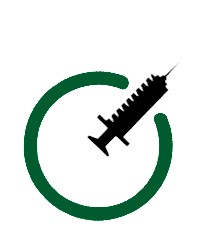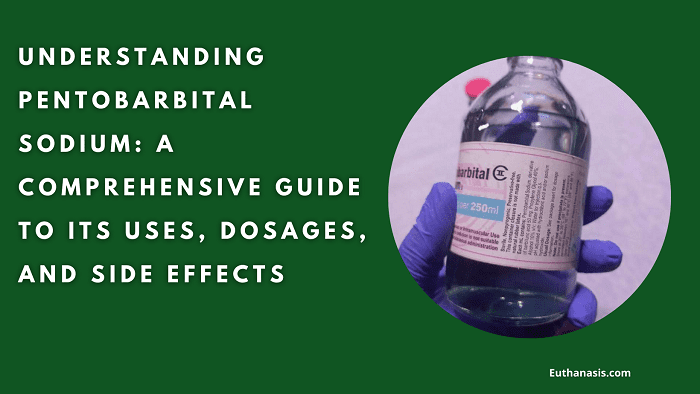Understanding Pentobarbital Sodium: A Comprehensive Guide to Its Uses, Dosages, and Side Effects
Understanding Pentobarbital Sodium: A Comprehensive Guide to Its Uses, Dosages, and Side Effects
Understanding Pentobarbital Sodium is a powerful drug that has been used for a variety of medical purposes since the 1930s. It is a barbiturate, meaning it depresses the central nervous system and induces sedation, making it useful for anesthesia, sleep disorders, and even euthanasia. But like any powerful drug, pentobarbital sodium can be dangerous when used improperly.
Key Indications
Pentobarbital is approved for:
- Sedation/Hypnosis: Short-term treatment of insomnia or pre-anesthesia.
- Seizures: Management of status epilepticus, eclampsia, tetanus, and toxic reactions (e.g., strychnine poisoning).
- Off-Label Uses: Barbiturate coma for severe brain injury or elevated intracranial pressure (ICP).
What is Pentobarbital Sodium?
Pentobarbital sodium is a white, crystalline powder that is usually administered as an injection. It belongs to the class of drugs known as barbiturates, which were first introduced in the early 1900s and quickly gained popularity as sedatives and anesthetics.
Today, pentobarbital sodium is most commonly used as a short-acting sedative or anesthetic, although it can also be used to treat sleep disorders or as part of a euthanasia protocol.
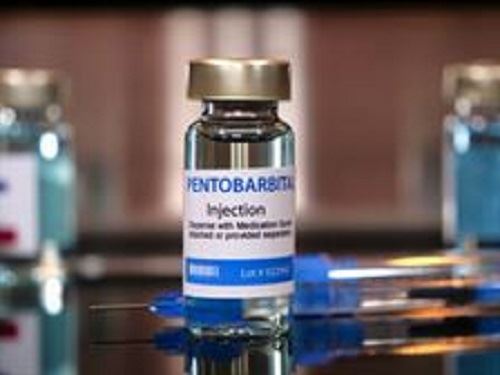
Uses of Pentobarbital Sodium
Sedation and Anesthesia
One of the most common uses of pentobarbital sodium is as a sedative or an anesthetic. It is often used in hospital settings to help patients relax before surgery or other medical procedures. In low doses, it can also be used to treat insomnia or other sleep disorders.
Euthanasia
Pentobarbital sodium is also used as part of a euthanasia protocol for animals and humans. In these cases, the drug is administered at a much higher dose than for sedation or anesthesia, causing rapid and painless death.
Seizure Management
In some cases, pentobarbital sodium can be used to manage seizures in patients who have not responded to other treatments. This is typically reserved for severe cases, as the drug can have serious side effects.
Dosages of Pentobarbital Sodium
Note: Doses vary by indication, age, and clinical context. Always adjust for renal/hepatic impairment.
For sedation or anesthesia, the typical dosage is between 100-300 milligrams, depending on the patient’s weight and other factors. For euthanasia, the dosage is much higher, usually between 1-5 grams.
It’s important to note that pentobarbital sodium is a powerful drug that can be dangerous when used improperly. Only trained medical professionals should administer the drug, and patients should be closely monitored for signs of adverse reactions.
Pentobarbital Dose in Seizures:
Note:
Mechanical ventilation and cardiovascular monitoring required; Titrate the dose until the cessation of electrographic seizures or burst suppression.
-
Pentobarbital Neurocritical Care Society recommendations:
- Loading dose:
- 5 to 15 mg/kg administered at a rate of ≤50 mg/minute, may give an additional 5 to 10 mg/kg with a continuous infusion.
- Continuous infusion:
- 5 to 5 mg/kg/hour.
- If the patient experiences breakthrough status epilepticus while on continuous infusion, administer an additional 5 mg/kg bolus and increase the infusion rate by 0.5 to 1 mg/kg/hour every 12 hours.
- Loading dose:
Barbiturate coma in severe brain injury patients and elevated intracranial pressure (off-label):
-
Loading dose:
- 10 mg/kg intravenous given over 30 minutes (or ≤25 mg/minute), followed by 5 mg/kg every hour for 3 doses, monitor blood pressure and respiratory rate.
-
Maintenance infusion:
- 1 mg/kg/hour initially;
- The dose may be increased to 2 to 4 mg/kg/hour to maintain burst suppression on EEG.
Pentobarbital dose in children:
Note:
Consider the potential for delayed metabolism or elimination in infants <6 months of age.
Pentobarbital Dose in the Hypnotic:
-
Children:
- 2 to 6 mg/kg intramuscular
- The maximum dose: 100 mg/dose.
- Note: Use has generally been replaced by other agents.
Pentobarbital Dose in the Preoperative Sedation:
Note:
Use has generally been replaced by other agents.
Infants and Children:
-
-
-
- 2 to 6 mg/kg intramuscular
- The maximum dose is 100 mg/dose.
- 1 to 3 mg/kg intravenous every 10 minutes up to a maximum total dose of 6 mg/kg, not to exceed a total dose of 100 mg.
-
-
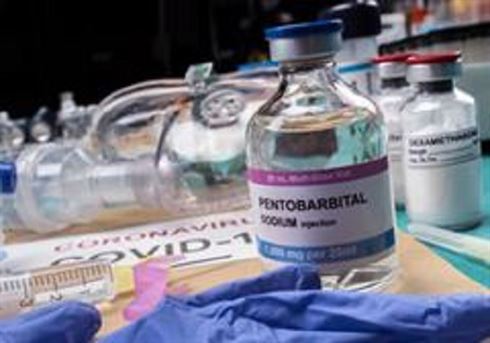
Pentobarbital Dose in the Procedural Sedation:
Note: Use has generally been replaced by other agents.
-
Infants and Children:
- 2 to 6 mg/kg intramuscular.
- The maximum dose is 100 mg/dose.
-
Infants and Children:
- 1 to 2 mg/kg intravenous initially, additional doses of 1 to 2 mg/kg every 3 to 5 minutes to the desired effect.
- The usual effective total dose is 1 to 6 mg/kg.
- The maximum total dose is 100 mg/dose.
- Note: Patients receiving concurrent barbiturate therapy may require higher total mg/kg doses (up to 9 mg/kg).
-
Adolescents:
- 100 mg
-
Oral: Limited data available:
- Infants:
- 4 mg/kg/dose per oral, if needed, supplemental 2 to 4 mg/kg/dose every 30 minutes.
- The maximum total dose is 8 mg/kg.
- Children:
- <4 years:
- 3 to 6 mg/kg per oral.
- The maximum dose is 100 mg/dose.
- ≥4 years:
- 1.5 to 3 mg/kg per oral.
- The maximum dose is 100 mg/dose.
- <4 years:
- Infants:
-
Rectal: Limited data available:
- Children:
- <4 years:
- 3 to 6 mg/kg;
- The maximum dose is 100 mg
- ≥4 years:
- 5 to 3 mg/kg;
- The maximum dose is 100 mg
- <4 years:
- Children:
Pentobarbital Dose in the Reduction of Elevated ICP:
Note:
Intubation is required. The dose is adjusted according to hemodynamics, ICP, cerebral perfusion pressure, and EEG.
-
Low dose:
- Children and Adolescents:
- 5 mg/kg intravenous every 4 to 6 hours.
- Children and Adolescents:
-
High-dose pentobarbital coma:
- Children and Adolescents:
- Loading dose: 10 mg/kg intravenous over 30 minutes, then 5 mg/kg every hour for 3 hours;
- The initial maintenance infusion is 1 mg/kg/hour.
- Adjust the dose to maintain burst suppression on EEG;
- The maintenance dose range: 1 to 2 mg/kg/hour.
- Children and Adolescents:
Dose in the Sedation of a mechanically ventilated ICU patient (who failed standard therapy):
- Loading dose: 1 mg/kg intravenous followed by 1 mg/kg/hour infusion.
- Additional boluses at a dose equal to the hourly rate may be given every 2 hours as needed.
- If ≥4 to 6 boluses are administered within 24 hours, then increase the maintenance rate by 1 mg/kg/hour;
- The reported required range: 1 to 6 mg/kg/hour (median: 2 mg/kg/hour).
- Tapering of dose and/or conversion to oral phenobarbital has been reported for therapy ≥5 days.
Note:
Higher loading and initial maintenance doses are known to cause increased chances of adverse effects.
Pentobarbital dose in the treatment of refractory Status epilepticus:
Note:
Mechanical ventilation and cardiovascular monitoring required; titrate the dose to the cessation of electrographic seizures or burst suppression.
-
Infants, Children, and Adolescents:
- Loading dose: 5 mg/kg intravenous;
- Maintenance infusion: 1 mg/kg/hour initially;
- The dose may be increased up to 3 mg/kg/hour (usual range: 1 to 3 mg/kg/hour);
- Maintain burst suppression on EEG for 24 to 48 hours (no seizure activity), tapering pentobarbital rate by 0.5 mg/kg every 12 hours has been reported.
-
High-dose pentobarbital coma:
- Infants and Children:
- Loading dose: 10 to 15 mg/kg intravenous given slowly over 1 to 2 hours;
- Monitor blood pressure and respiratory rate.
- Maintenance infusion: Initial: 1 mg/kg/hour;
- The dose may be increased up to 5 mg/kg/hour (usual range: 0.5 to 5 mg/kg/hour);
- Maintain burst suppression on EEG;
- If the patient experiences breakthrough status epilepticus while on continuous infusion, administer an additional 5 mg/kg bolus and increase the infusion rate by 0.5 to 1 mg/kg/hour every 12 hours until burst suppression.
- Infants and Children:
Note: Loading doses of 20 to 35 mg/kg (given over 1 to 2 hours) have been utilized in pediatric patients for pentobarbital coma, but these higher loading doses often cause hypotension requiring vasopressor therapy.
Pregnancy Risk Factor D
- If used during pregnancy, barbiturates may cross the placenta. They can be seen in the fetal liver or fetal brain. This could lead to an increase in the incidence of fetal abnormalities.
- If given in the final trimester, it will decrease the frequency of uterine cramps.
- Neonates can experience withdrawal symptoms such as seizures and hyperirritability if pentobarbital has been given to the mother during the third trimester.
- Pentobarbital can cause respiratory depression in newborns if mothers are given it, especially in premature infants.
Use of Pentobarbital while breastfeeding
- Breast milk contains barbiturates.
- Pentobarbital should not be administered to nursing mothers.
Dose adjustment in renal disease:
The manufacturer’s labeling does not include any dosage adjustments. Dose reduction is possible.
Notice: Patients on pentobarbital are more likely to experience severe reactions to propylene glycol, especially if their treatment is extended or they are taking greater doses.
Dose adjustment in liver disease:
There are no dosage adjustments provided in the manufacturer’s labeling. However, dose reduction is required.
Side Effects of Pentobarbital Sodium
As with any medication, pentobarbital sodium can cause side effects. Some of the most common side effects include:
- Drowsiness
- Dizziness
- Headache
- Nausea and vomiting
- Confusion
- Respiratory depression
In rare cases, pentobarbital sodium can also cause more serious side effects, such as:
- Allergic reactions
- Seizures
- Coma
- Cardiac arrest
Patients who are taking pentobarbital sodium should be closely monitored for any signs of adverse reactions, and medical attention should be sought immediately if any serious side effects occur.
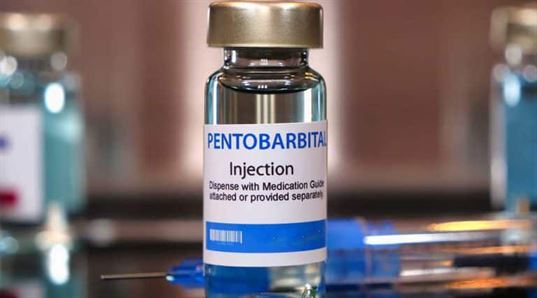
Contraindications to Pentobarbital:
- Hypersensitivity to barbiturates and any component of the formulation
- Porphyria
Warnings and precautions
-
Depression in the CNS:
- CNS depression can result, which could impair mental or physical abilities. Therefore, it is important to be cautious when operating machinery or driving.
-
Respiratory depression
- Intravenous pentobarbital may cause respiratory depression, so it is important to be careful.
- Management of seizures and traumatic brain injuries requires intubation.
-
Depression
- You should not use it if you are suffering from depression or suicidal tendencies.
-
Hepatic impairment
- Hepatic impairment requires caution and dose reduction. Avoid it in the case of hepatic impairment.
-
Renal impairment
- Patients with impaired renal function should exercise caution and reduce their doses.
-
Substance abuse
- Pentobarbitol can be addictive and cause dependence in patients who have been abused.
Pentobarbital: Drug Interaction
Monitoring parameters:
- BP
- Renal function tests/BUN
- Serum lactate
- Cardiovascular status
- CNS status
- Osmolal gap
- Respiratory status (for conscious sedation, includes pulse oximetry)
- clinical signs of propylene glycol toxicity (with long-term therapy).
Barbiturate coma:
- Monitor oxygenation as well as arterial and central venous pressures to guide fluid and vasoactive therapy for maintenance of blood pressure; temperature.
Elevated ICP:
- Monitor ICP, CPP, and EEG
How to administer Pentobarbital?
Intramuscular:
- Inject into a large muscle.
- Because of potential tissue irritation, no more than 5mL (250mg) should be injected at one site.
Intravenous
- You can give IV push doses undiluted, but the maximum dose should not exceed 50mg/minute.e
- Because parenteral solutions can be very alkaline, intra-arterial injections should not be used.
Extravasation management
- You should stop the infusion immediately and disconnect it.
- It is important to slowly aspirate the extravasated solution without flushing it.
- It is important to remove the needle and elevate the limb. Warm compresses are recommended.
Mechanism of action of Pentobarbital:
- Barbiturates depress the sensory cortex, decrease motor activity, affect cerebellar function, and lead to drowsiness or sedation.
- Higher doses of barbiturates have anticonvulsant effects.
- Higher doses can cause respiratory depression due to their ability to reduce brain metabolism and cerebral blood flow.
Action in Children and Adults Sedation can occur in between 10 and 15 minutes following an intravenous injection, 3 – 5 minutes after intravenous injection, and 15 – 60 minutes after intravenous injection. Time: For Children and Adults. The sedation following an IM injection can last for up to 2 hours. It will also last 15 to 45 minutes after an IV infusion. Protein binding: 45% to 70% Metabolism: Occurs in the liver via hydroxylation and glucuronidation. Terminal Half-life elimination: Children: 26 ± 16 hours. Healthy Adults: 22 hours (average) Range: 15 to 50 hours, and is dose dependent.t Excretion: Urine (<1%, as unchanged drug)
International Brands of Pentobarbital:
- Nembutal
- Dormital
- Entobar
- Medinox Mono
- Nembutal
- Pentone
- Praecicalm
- Prodormol
- Sombutol
- Sopental
Conclusion
Pentobarbital sodium is a powerful drug that has been used for a variety of medical purposes for decades. It can be an effective sedative or anesthetic when used properly, and it has also been used

 Deutsch
Deutsch Español
Español Français
Français Italiano
Italiano Русский
Русский Nederlands
Nederlands Polski
Polski Türkçe
Türkçe